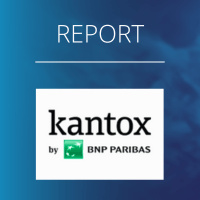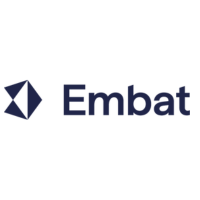Today, one of the major challenges associated with blockchain is scalability. The ever-increasing demand for blockchain applications has resulted in significant scalability challenges, resulting in transaction latency, making the system slower and less efficient, thereby hindering their widespread adoption and utility.
As blockchain adoption continues to surge, the issue of scalability looms large. Therefore to address these challenges in order to be able to handle a larger number of transactions and have more efficient performance, the blockchain industry has been actively working on solutions to address these blockchain scalability concerns.
In this blog we will delve into the various challenges associated with blockchain scalability problems, and examine the various blockchain scalability solutions, exploring their fundamental concepts, benefits, and real-world implications to address these issues while maintaining the network’s security and decentralisation.
What is blockchain scalability?
But first of all, what is blockchain scalability? When discussing scalability in the context of blockchain technology, the term refers to the transaction processing speed. Blockchain scalability has to do with the capacity of a blockchain network to handle a growing volume of transactions, store data and increasing the number of nodes running in the blockchain network efficiently and in a timely manner, without compromising on its core features such as security, decentralization, and consensus. For a blockchain network to meet up to its expectations, it must be able to process loads of transactions per second (TPS). Some factors which can impact blockchain scalability are networking, cost and capacity, finality, throughput, and confirmation time.
Why is scalability in blockchain important?
The importance of scalability cannot be underestimated. Scalability is a critical factor in blockchain networks since the network’s size and complexity increase with each transaction added to the blockchain. It is pivotal that blockchain networks are able to process loads of transactions very quickly and effectively to meet the increasing demands.
When a certain network is not capable of handling the transaction demand or requirements, it will result in slow transaction processing times, high fees, and poor user experience. Slow transaction times and high transaction fees may hinder the usability and practicality of blockchain networks, especially for applications that require high transaction volumes, such as decentralized finance (DeFi), supply chain management and others. As a result, scalability is critical for blockchain’s future growth.
Scalability challenges
Scalability has been identified as the most significant barrier to establishing public blockchains. Blockchain scalability problems basically refer to the challenges in the blockchain network. These challenges include: limited throughput, high fees and long confirmation times.
One of the primary limitations of many popular blockchains is their limited transaction throughput and latency in processing transactions promptly. Scalability issues can arise when a blockchain network is unable to process a sufficient number of transactions when there is a significant increase in the number of transactions, leading to slower confirmation and processing times and higher fees.
Traditional blockchains, like Bitcoin and Ethereum, are facing inherent scalability limitations due to their design choices. These networks typically rely on consensus mechanisms that require every participant to validate and store all transactions. The scalability issue emerges mostly when the number of nodes and transactions increases. While this ensures decentralization and security, it comes at the cost of limited transaction throughput. These blockchains thereby experience congestion, resulting in delays in transaction confirmation and inflated transaction fees.
Bitcoin, is facing scalability issues due to its limited block size, that restricts the number of transactions that can be included in a single block, with block creation time averaging 10 minutes and block size limited to 1 MB. The current capacity of the Bitcoin blockchain can only process around 7 to 10 transactions per second (TPS), far less than traditional payment systems like Visa, which can handle thousands of transactions per second.
The Scalability/Blockchain Trilemma
Blockchain networks face a fundamental challenge known as the scalability or blockchain trilemma. It refers to the idea that it is challenging to simultaneously achieve three key features of a blockchain system: decentralization, security, and scalability, thus requiring trade-offs to improve scalability.
The trilemma suggests that obtaining increased scalability would come at the expense of decreased security and decentralization. At the same time, it is critical to remember that only scalability can enable blockchain networks to compete successfully with traditional, centralized platforms.
This trilemma highlights the need to finding the right balance between these three critical aspects of blockchain technology being essential for blockchain’s growth. To address the Blockchain trilemma and other issues mentioned above, researchers and developers are exploring various solutions to increase scalability whereby a perfectly decentralized, secure and scalable blockchain is the ultimate goal. But is it feasible to create Blockchain scaling solutions without compromising security or decentralization? We will show that in the following part.
Solutions to these Scalability Problems
The need for scalable blockchain networks has spurred the exploration and development of numerous solutions and practices to help overcome these scalability challenges including the limitations of transaction throughput and high fees. These solutions aim to increase blockchain networks’ transaction throughput and capacity while maintaining the security and decentralization that make blockchain technology so valuable.
Scalability advancements are consistently made across the various blockchain networks. Blockchain scaling solutions have been developed in many forms. These can broadly be categorised into four categories including Layer 1 (On-chain) solutions, Layer 2 (Off-chain) solutions, Scalable consensus methods and hybrid solutions.
Each solution category provides distinct strategies for addressing the Blockchain’s scalability issues. Each approach tackles scalability differently, and their implementation varies depending on the blockchain network’s architecture. In addition to these proposed solutions, other blockchain networks are exploring various innovative approaches to address scalability issues.
Layer 1 (on-chain) scalability solutions
This is the most common blockchain scalability solution, also known as first-layer or on-chain scaling solutions. It is used to modify the core architecture of the blockchain. Layer 1 solutions aim to address scalability challenges by making optimizing changes to the underlying protocol itself, to increase its transaction throughput. Segregated witness (SEGWIT), sharding and hard forking are three prevalent layer 1 blockchain scaling options.
– Segregated Witness (SegWit)
To address these scalability issues, Bitcoin developers proposed a solution called Segregated Witness (SegWit). SegWit, is a protocol upgrade that focuses on changing the way and structure of data storage. The solution is designed to primarily enhance transaction throughput on a blockchain, by changing how data is stored, making blocks on the network smaller resulting in increased capacity and storage space for transactions within Bitcoin’s 1MB-storage blocks.
It separates transaction signature data from the transaction data, thereby enhancing scalability making the network more efficient. The removal of the digital signature may free up additional space for the addition of new transactions, allowing more transactions to be processed in each block, thereby improving Bitcoin’s transaction efficiency and capacity. However, while it enhances throughput and capacity, it isn’t a comprehensive long-term solution to blockchain scalability.
– Sharding
Another popular on-chain scalability solution is sharding introduced by Ethereum to improve the scalability of its blockchain. It involves the breaking down of the blockchain network into smaller, more manageable data sets known as shards.
By breaking down transactions into smaller pieces, it can act as the sum of its parts, with each shard handling a portion of the group’s transaction processing.
Sharding effectively eliminates the need to rely on the performance of individual nodes to achieve quicker and more efficient transaction throughput.
Each shard operates independently, processing its own transactions and smart contracts. Each shard is thereby managed by specific nodes, allowing multiple transactions to occur simultaneously. The network would then execute the shards in parallel with one another
As a result sharding can significantly save both storage space and processing transaction times, thereby increasing the overall transaction throughput and capacity of the overall network. On the other hand it can also presents challenges related to security and communication between shards.
– Hard forks
And there is the hard fork, a procedure that focuses on making structural or fundamental changes to a blockchain network’s properties. Hard forking may increase the size of the block or reduce the time necessary to create a block. While hard forking is a prerequisite for layer 1 blockchain scalability solutions, a contentious hard fork is the most productive option. This essentially suggests a split in the larger blockchain network, with a certain segment of the community contradicting the core community on specific topics. In such instances, a subset of a blockchain community may elect to make fundamental modifications to the underlying source.
Layer 2 (off-chain) scalability solutions
The viability of first-layer or on-chain scaling methods is heavily dependent on changes to the main blockchain network. There is now a wide variety of Layer-2 or second layer scalability solutions to choose from that have drastically reduced transaction times.
Layer 2 solutions aim to address scalability challenges by building additional layers (supplementary protocols) on top of the existing blockchain network, without making fundamental changes to the underlying protocol. These secondary protocols would be used to ‘offload’ transactions from the primary blockchain process transactions off-chain and periodically settling them on-chain in order to increase its capacity, which can reduce congestion and increase transaction throughput.
These layers can include state channels or side chains and protocols such as Lightning Network and Plasma, which enables instant and low-cost transactions for users. These solutions have demonstrated significant promise in improving the scalability of blockchain technology, thereby increasing its usability in various industries. Layer-2 solutions have the potential to transform finance, supply chain management, and digital identity verification, among other sectors.
– Sidechains
Sidechains are a popular choice among layer 2 solutions for determining how to solve a scalability issue in the Blockchain of your choosing. They are separate chains that are connected to and run in parallel with the main blockchain.
They operate as a transactional chain next to the blockchain in big batch transactions, enabling the processing of transactions off the main chain, in a more efficient way. Sidechains can provide faster transaction confirmations and lower fees, as they are not limited by the transaction throughput of the main chain. This approach reduces network congestion on the mainchain, enhancing scalability.
In comparison to the primary chain, sidechains use distinct consensus techniques and can have different rules and functionalities tailored to specific use cases.
This can increase transaction throughput by offloading certain types of transactions to the sidechain, where faster and cheaper transactions can take place. Once transactions are completed on the sidechain, the final state can be securely settled on the mainchain via a two-way peg mechanism.
Prominent examples include Plasma on Ethereum and Parachain on Polkadot, known for their scalability improvements while maintaining security.
– State Channels
State channels are a typical inclusion among layer 2 solutions for blockchain scalability. They allow two-way interactions between blockchain networks and off-chain transaction channels through various approaches. They enable off-chain transactions between users without having to interact with the main blockchain for each transaction. On the other hand, state channels function as resources near to the network that is integrated with the assistance of a smart contract or multi-signature method.
They may conduct numerous off-chain transactions without recording each individual transaction on the main blockchain. They thereby do not need the immediate participation of miners to validate transactions. When a transaction or series of transactions on a state channel is completed, the relevant blockchain records the final ‘state’ of the ‘channel’ and any related transactions with the final state on the layer-1 blockchain.
State channels have the potential to significantly improve the capacity and transaction throughout speed of the blockchain network to a great extent. By creating a secure channel, participants can engage in fast and inexpensive transactions. This technique can significantly reduce congestion and minimize transaction fees, making it ideal for high-frequency, low-value transactions, such as microtransactions and gaming applications.
– Nested blockchains
At its core, this solution operates as a decentralized network infrastructure that utilizes the main blockchain to establish parameters for a wider interconnected network of secondary chains. It guarantees the execution of transactions across a network of interconnected secondary chains. By allowing transactions to be executed over these secondary chains, nested blockchains can improve scalability without impacting the main blockchain’s security or decentralisation.
– Payment Channels
Payment channels facilitate off-chain transactions between parties, conducted in parallel to the main blockchain. These channels are established, transactions executed, and channels closed with final state recorded on the main blockchain.
Payment channels allow for faster, cheaper and more efficient transactions by conducting them off the main blockchain. By establishing a direct payment channel between two parties, transactions can occur rapidly and with minimal fees. Lightning Network (Bitcoin) and Raiden Network (Ethereum) are notable implementations.
- Lightning Network
One popular Layer 2 solution is the Lightning Network, which is a payment channel network built on top of the Bitcoin blockchain. The Lightning Network is an off-chain protocol that enables instant, low-cost transactions by establishing payment channels between users. Transactions can be routed through these channels without requiring confirmation on the main blockchain. They can conduct multiple transactions off-chain, and then settle the final transaction on the main blockchain The Network thereby exploits smart contract functionality through these private, off-chain channels over the main blockchain network.
Layer-2 solutions, such as the Lightning Network, offer promising improvements in transaction speed and cost. By shifting transactions away from the mainchain, the Lightning Network reduces the burden on the mainchain. As the secondary channels can process transactions more quickly than the main blockchain, this can help reduce network congestion and increase transaction speed for Bitcoin transactions. Consequently, users no longer have to pay mining fees or wait for prolonged periods for block confirmation.
- Plasma
Another prominent blockchain Layer 2 scalability solution is Plasma, which is a scaling framework for Ethereum. It primarily focuses on the use of child chains that come from a parent blockchain. Each of the child chains functions as a separate blockchain that operate independently and conduct transactions off the main Ethereum chain.
Plasma may be created for use cases involving processing a certain type of transaction while assuring execution in a comparable environment with enhanced security. Child chains can be used for various applications and smart contracts, and transactions on the child chains can be settled on the main Ethereum chain, enabling higher transaction throughput.
Scalable consensus mechanisms
In addition to Layer 1 and Layer 2 solutions, there are other innovative approaches that seek to address scalability challenges such as scalable consensus mechanisms, to streamline reaching consensus. They are thereby exploring protocol upgrades to improve their scalability. This approach helps streamline consensus so that the algorithms offer excellent throughput and scalability.
Alternative consensus mechanisms include solutions such as such as proof-of-stake (PoS) and delegated proof-of-stake (dPoS). These require significantly less energy than proof-of-work (PoW) and can process transactions more quickly, leading to improved scalability. For example, Ethereum made a transition from a PoW to a PoS consensus mechanism, which has laid to increase its transaction throughput and significantly reduced energy consumption. Other examples of scalable consensus mechanisms include Proof-of-Authority and Byzantine Fault Tolerance.
– Proof of Stake
In a bid to address the scalability trilemma associated with blockchains, the Ethereum network has in recent times, embarked on numerous upgrades. They introduced a new consensus mechanism called Proof of Stake (PoS) to enhance scalability without compromising security or decentralisation, while considerably reducing the computational burden required for consensus.
Proof-of-stake (PoS) is a consensus mechanism where miners are replaced with validators, thereby altering the initial block validation tradition. These validators are selected randomly, and they can validate transactions and create blocks without solving complex mathematical problems. By selecting validators based on their stakes in the network, PoS allows for faster transaction processing and reduced energy consumption compared to PoW.
– Delegated Proof-of-Stake (DPoS)
DPoS, or Delegated Proof-of-Stake, is a consensus technique, where a limited number of trusted nodes are selected to validate transactions and create blocks. In this instance, token holders get to choose validators for network transactions, which can improve transaction throughput compared to traditional PoW or PoS consensus mechanisms.
– Proof of Authority
Proof-of-Authority is also a viable option among blockchain scalability solutions. It is a scalable consensus method with a reputation-based consensus algorithm, where only selected nodes have the power to authenticate the transactions on the network with this technique. The chosen nodes are in charge of validating network transactions using the Proof-of-Authority consensus technique.
– Byzantine Fault Tolerance or BFT
And there is the Byzantine Fault Tolerance (BFT). This consensus technique addresses the Byzantine Generals Problem, which is a distributed system characteristic that implies the need for continual consensus despite various antagonistic participants in the network.
Hybrid solutions
There are various blockchain scalability solutions that involve a combination of the above approaches: so-called hybrid solutions. A blockchain might use both sharding and Layer 2 solutions to increase transaction throughput whilst also optimizing its protocol for better performance.
A great example is the Core DAO Network that tackles the scalability problem by leveraging the Satoshi Plus consensus mechanism, which combines the best aspects of Bitcoin’s security and immutability (Proof-of-Work) and Ethereum’s scalability and efficiency (DPoS). This innovative approach allows the protocol to provide a robust layer one blockchain solution capable of handling a significantly higher transaction volume while maintaining security and decentralization. This provides a promising framework for building scalable dApps and unlocking the true potential of blockchain technology.
Interoperability: Inter-blockchain communication issues
In a landscape with numerous coexisting blockchains, seamless interaction and interoperability is also a great challenge. There are various cross-chain interoperability solutions that aim to connect different blockchain networks, allowing for a seamless exchange of value and data. This may help increase the overall capacity of the blockchain ecosystem by allowing different networks to work together, thereby contributing to the alleviation of scalability concerns.
Protocols like Polkadot, Cosmos, and other interoperable blockchain networks enable seamless integration and communication and the efficient transfer of assets and data across disparate blockchains. This interoperability enhances scalability and opens up a world of possibilities for developers and users to leverage the strengths of multiple blockchains.
Looking ahead
Blockchain scalability is a critical factor that needs to be addressed for blockchain technology to reach its full potential and deliver on its promise of secure, decentralized, and efficient transactions. Balancing scalability, decentralisation and security thereby remains a critical challenge. However these are not insurmountable obstacles.
In the meantime various solutions have been proposed offering a promising path forward to overcome the scalability limitations of layer-1 blockchains. There is however no one-size-fits-all solution to the blockchain scalability problem and none of them are yet perfect and each has its limitations.
Looking ahead, the future of blockchain scalability is promising, with further advancements expected in scalability solutions. As blockchain technology continues to evolve, the balance between security, decentralization, and scalability will continue to be refined, propelling us toward a scalable and decentralized future, thereby driving the mainstream adoption of blockchain across various industries.
For businesses and organizations it is therefore important to stay informed on these developments and be proactive about adapting to the changing landscape of blockchain technology.












